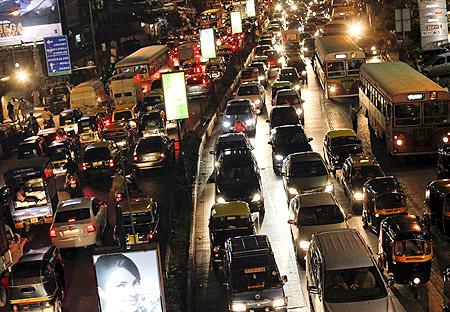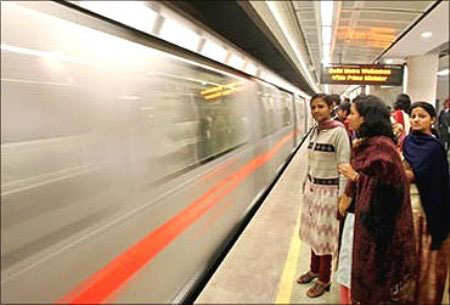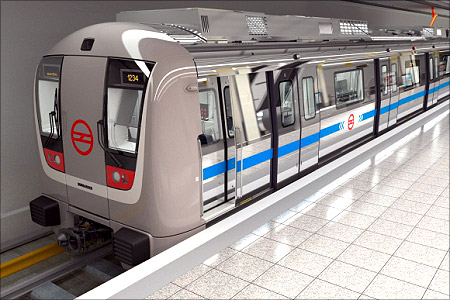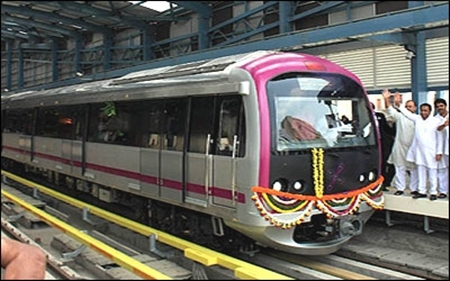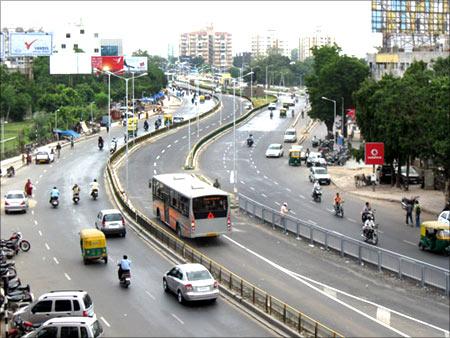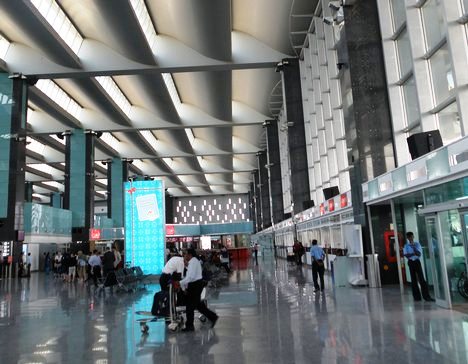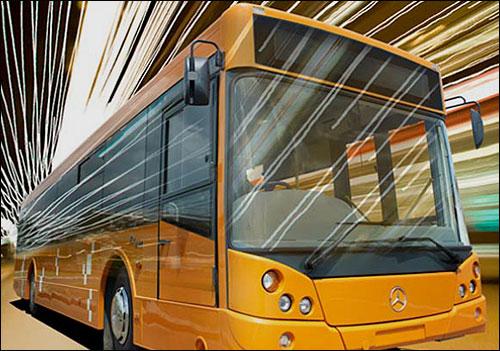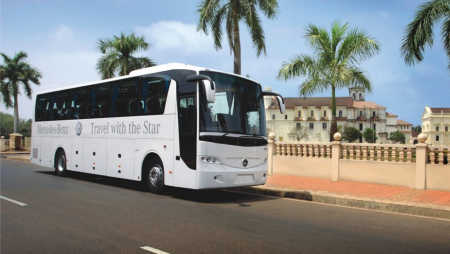 | « Back to article | Print this article |
How we can make Indian cities livable
Public transport plays a key role in creating the affordable urban capacity that is desperately needed in order to absorb the urban explosion Indians will have to live with for the foreseeable future.
Traffic jams, the controversies surrounding the widening of roads by cutting down shade-giving trees, and automobile pollution all get addressed when attention is paid to public transport.
Click NEXT to read more...
How we can make Indian cities livable
Clean, non-polluting, reliable and timely public transport that suits everyone's pocket will go a long way in making and keeping towns and cities livable.
The way the world is moving can be gauged from the fact that young people in the US no longer think owning and driving a car is cool. So much so that General Motors is looking at promoting cars per se.
In this it is being helped by a former drummer in an alternative rock band who, in appearance and dress, is far removed from the typical executive in a business suit.
Click NEXT to read more...
How we can make Indian cities livable
Since it is Hollywood movies that attached an aspirational value to cars in emerging economies in the first place, role models in them have to now do things like periodically travel by bus! (Sachin, hope you are listening.)
To understand what an affordable transport solution for a government is, let us first see what it is not. Right up on the negative list is metro rail.
The capital cost of Delhi Metro Rail is Rs 113 crore per km up to phase II. But if you include all the hidden subsidies, the cost works out to around Rs 200 crore per km.
Click NEXT to read more...
How we can make Indian cities livable
Such cost makes sense only in those large cities that are linear (Mumbai and Kolkata) and not circular (Delhi and Bangalore) in layout; and where thousands of white-collar workers commute daily to a central business district or a cluster of government offices.
The middle class in every large Indian city wants a metro rail, but the fully amortised cost per passenger kilometre is seldom good value for money.
A more viable option, which has a lot going for it and costs a fraction of metro rail, is bus rapid transit (BRT). For example, for Ahmedabad, it is Rs 11 crore per km.
Click NEXT to read more...
How we can make Indian cities livable
A BRT is configured along a central track just for buses with access from both sides of the road and dedicated tracks for cyclists, walkers and, of course, automobiles.
But for it to succeed, there has to be buy-in from state and local authorities and effective consumer education on dos and don'ts.
This is why BRT has succeeded in Ahmedabad but not in Delhi. But the main handicap for BRT is that it needs wide roads, rare in India's unplanned built-up cities. You can have it only on token stretches in most cities.
Click NEXT to read more...
How we can make Indian cities livable
Thus, metro rail and BRT offer partial solutions, and so we are left with metro bus - the good old bus system. At Rs 25 lakh per bus, 1,000 buses cost only around what two km of Delhi Metro does.
The problem with bus services is that they are irregular. Also, introducing more buses on already crowded roads is hardly a solution.
However, two cities have taken innovative steps in this regard. Bangalore has sought to bring about some rationality in its totally unplanned route structure, which grew in response to neighbourhood demand articulated by the local MLA and corporator.
Click NEXT to read more...
How we can make Indian cities livable
It has introduced the Big10 system: bus routes follow arterial roads linking the city centre to the periphery, and along the Outer Ring Road, thus becoming direction- and not destination-oriented.
Regular services ply on these routes - the idea is that for a journey you take a Big10 bus to some point and then hop on to another.
The success of the system hinges on regular, frequent service so that an end-to-end journey with the interchange is completed in reasonable time.
Click NEXT to read more...
How we can make Indian cities livable
By far the most innovative initiative, and the one with the greatest potential, is the one underway in Indore.
There, a regulatory authority lays down routes, stops and fares, and it also manages the operation of privately provided and operated bus routes.
The key innovation is a global positioning system, or GPS, with a sensor in every bus to monitor whether it is running along its designated route and at the scheduled time.
Click NEXT to read more...
How we can make Indian cities livable
Bus operators get to keep fares paid by walk-in passengers; the regulator and operators share the sales proceeds from multiple journey passes and advertising.
Glitches like maintenance of buses need to be removed and the system built upon, but there is great promise in the use of technology to monitor and pull up defaulting service providers.
The challenge lies in devising a multi-modal transport system run on compressed natural gas, or CNG, that can take a person from within one neighbourhood to another via one or more modes (small and large buses, metro rail, even autorickshaws) and charge by distance and/or time.
Click NEXT to read more...
How we can make Indian cities livable
People should be able to load value on smart cards with card readers in every mode, deducting value for transportation provided.
Once such a well-regulated system is in place, taxes on car registration must be raised and an inner-city congestion charge should be levied to discourage the use of private cars, thus making space for new buses.
This can be a far more cost-effective public transport system than the dead end to which metro rail and flyovers are taking us.
The author is a senior fellow with the Centre for Public Policy at the Indian Institute of Management, Bangalore, working on urban issues.
